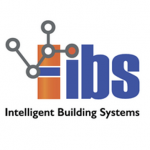Year after year, each version of Panorama enriches the product functionally. New added features allow new uses or an improvement of the existing product. However, these are really available if users can easily use the latest version.
This is why Codra has always put backward compatibility at the heart of its strategy. This allows users of older versions to easily upgrade to the latest release and benefit from the latest innovations almost effortlessly.
A constantly evolving SCADA digital platform
Panorama’s architecture is based on a core (a distributed real-time object bus and its unified configuration workshop) and functional modules. This architecture facilitates evolutions thanks to its flexibility and modularity. Combined with the year-on-year increase in R&D investments, it allows us to make more and more evolutions. These evolutions can be classified in 3 main categories:
- Complements to existing functionalities (e.g.: new database archiving in PS2022, extension of the time scheduling concept in PS2023 with unified modeling for different protocols such as BACnet, Sofrel, …)
- New functions (e.g. VoIP in PS2022, Web HMI in PS2022, IoT in PS2020, …)
- Technical modifications for the product’s sustainability (e.g.: as part of Panorama’s CSPN certification, Codra has made a commitment to the ANSSI – the French information system security Agency- to monitor its security elements over time).
In order to better respond to market expectations, Codra is fully integrated into its ecosystem as a member of professional or technical associations of our different businesses. Thanks to a local sales network close to its users or through active monitoring of business needs and technological developments, Codra defines and prioritizes product developments.
What are the current versions?
Backward compatibility is at the heart of Codra’s strategy
Backward compatibility and scalability are at the heart of the Panorama Suite architecture and development processes. They are particularly considered during the design phases of future evolutions.
This is not simply a porting of functions from one version to another, but a functional enrichment that extends the usage habits of the old mechanisms.
For example, the new PS2020 alarm window works with the previous setup, just as the Panorama Suite 2022 Web HMI works with the Desktop Mimic setup from previous versions. This new offering provides full web native access with almost no customization.
This backward compatibility allows the customer’s investments in the SCADA application and its environment to be sustainable by making them scalable and maintainable over time. This is all the more important as the SCADA environment is increasingly changing. It is no longer possible to fix an installation on a version and an environment during all its life; the modifications become essential to secure your IT infrastructure.
Upgrades without service interruption
Backward compatibility is not only static between versions, but dynamic during the upgrade. Indeed, service continuity is essential for some installations and therefore requires seamless upgrades. The Panorama platform allows you to move from one version to another without interruption of service (an upgrade procedure is described and tested by Codra).
In conclusion, the scalability of installations and backward compatibility are two related and inseparable subjects. In addition to the simple Maintenance in Operational Conditions (MOC), they allow to benefit from the latest innovations with very little effort.
For many years, Codra has been working simultaneously on these two themes to ensure that the Panorama digital platform is a scalable, modular and flexible solution to meet the needs of many industries.







